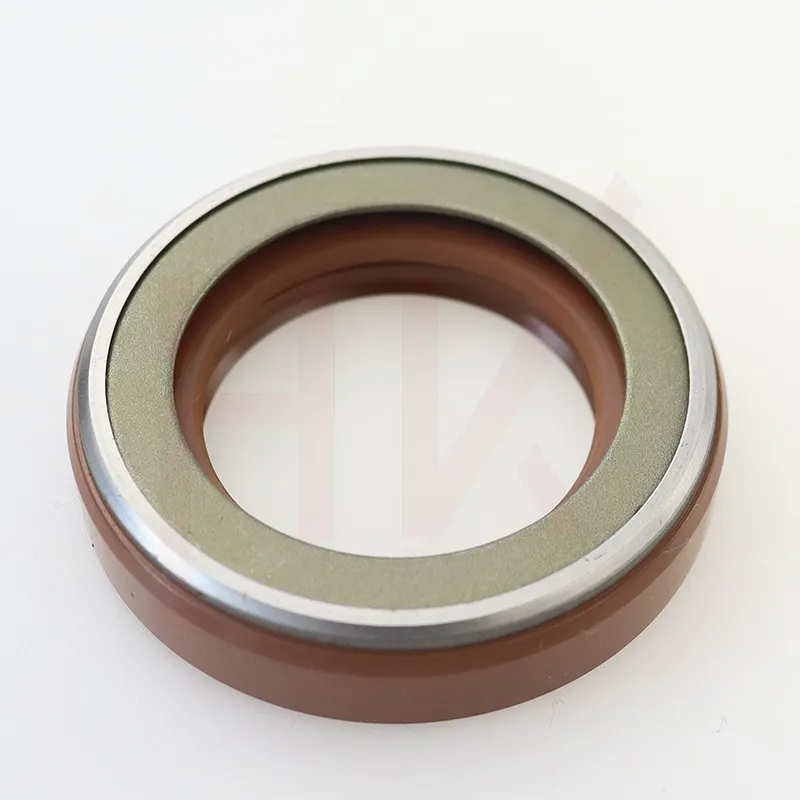നവം . 15, 2024 22:24 Back to list
rear hub seal
Understanding Rear Hub Seals Importance and Maintenance
The rear hub seal is a critical component in various vehicles, particularly in those with rear-wheel drive and all-wheel drive systems. This component plays a crucial role in ensuring the longevity and proper functioning of the vehicle's drivetrain. In this article, we will delve into the significance of rear hub seals, their function, common issues, and maintenance tips to extend their lifespan.
What is a Rear Hub Seal?
The rear hub seal is essentially a protective barrier located on the rear axle of a vehicle. Its primary function is to prevent the leakage of lubricant from the wheel hub and to keep contaminants such as dirt, water, and debris from entering the hub assembly. This seal is vital for maintaining the proper lubrication within the hub, which is necessary for the smooth operation of the wheel bearings and other associated components.
The Importance of Rear Hub Seals
Rear hub seals are often overlooked until they begin to cause problems. However, their importance cannot be overstated. The lubricant within the hub reduces friction between moving parts, enabling smooth rotation and preventing overheating. If the rear hub seal fails, lubricant can leak out, leading to a lack of lubrication. This can accelerate wear and damage to the bearings and result in costly repairs.
Moreover, the ingress of contaminants can lead to corrosion and additional wear on the internal components. A properly functioning rear hub seal is essential for improving fuel efficiency, as any binding or excessive friction can force the engine to work harder, thereby reducing fuel economy. In summary, a healthy rear hub seal ensures optimal performance, enhances safety, and extends the lifespan of the vehicle’s components.
Common Issues with Rear Hub Seals
There are several issues that can arise with rear hub seals, which can lead to poor vehicle performance. The most common problem is wear over time. Like any other rubber or elastomeric component, hub seals can degrade due to environmental factors, exposure to heat, and general wear and tear. Cracks, tears, or hardening of the seal material can occur, leading to leaks.
rear hub seal

Another common issue is improper installation. If a seal is not installed correctly, it may not fit snugly, which can result in the same leaking issues. Furthermore, contamination during installation or the presence of foreign materials can also compromise the effectiveness of the seal. A less common but significant problem is bearing failure, which can occur as a result of inadequate lubrication due to a failing seal.
Maintenance Tips for Rear Hub Seals
Regular maintenance can significantly extend the life of rear hub seals and other associated components. Here are some maintenance tips
1. Routine Inspections Regularly inspect the rear hub seals for any signs of wear, such as cracks or leaks. Catching these issues early can save you from more significant problems down the road.
2. Check Lubricant Levels During regular vehicle maintenance, check the lubricant levels in the wheel hub. If you notice any drop in levels, it could indicate a seal issue.
3. Professional Assistance If you are unsure about the condition of your rear hub seals or if you suspect a problem, it is advisable to consult a professional mechanic. They can perform thorough diagnostics and recommend the necessary repairs or replacements.
4. Environment Awareness Be mindful of where you drive your vehicle. Off-road conditions or harsh weather can accelerate the wear on seals. If you often drive in such environments, consider checking your seals more frequently.
Conclusion
Rear hub seals are small yet vital components that have a significant impact on vehicle performance and safety. By understanding their functions, recognizing potential issues, and committing to regular maintenance, vehicle owners can ensure their driving experience remains smooth and trouble-free. Remember, taking proactive measures today can prevent costly repairs tomorrow, allowing you to enjoy your vehicle to the fullest.
-
The Trans-formative Journey of Wheel Hub Oil Seals
NewsJun.06,2025
-
Graphene-Enhanced Oil Seals: Revolutionizing High-Pressure Oil Sealing
NewsJun.06,2025
-
Future of Hydraulic Sealing: Advanced Intelligent TCN Oil Seals
NewsJun.06,2025
-
Don’t Let a Broken TCV Oil Seal Ruin Your Day
NewsJun.06,2025
-
Bio-Inspired Dust Seals for Better Sealing Performance
NewsJun.06,2025
-
Biodegradable and Sustainable Hydraulic Seal Materials
NewsJun.06,2025
-
Top Oil Seal Solutions for Your Industrial Needs
NewsMay.22,2025
Products categories
















